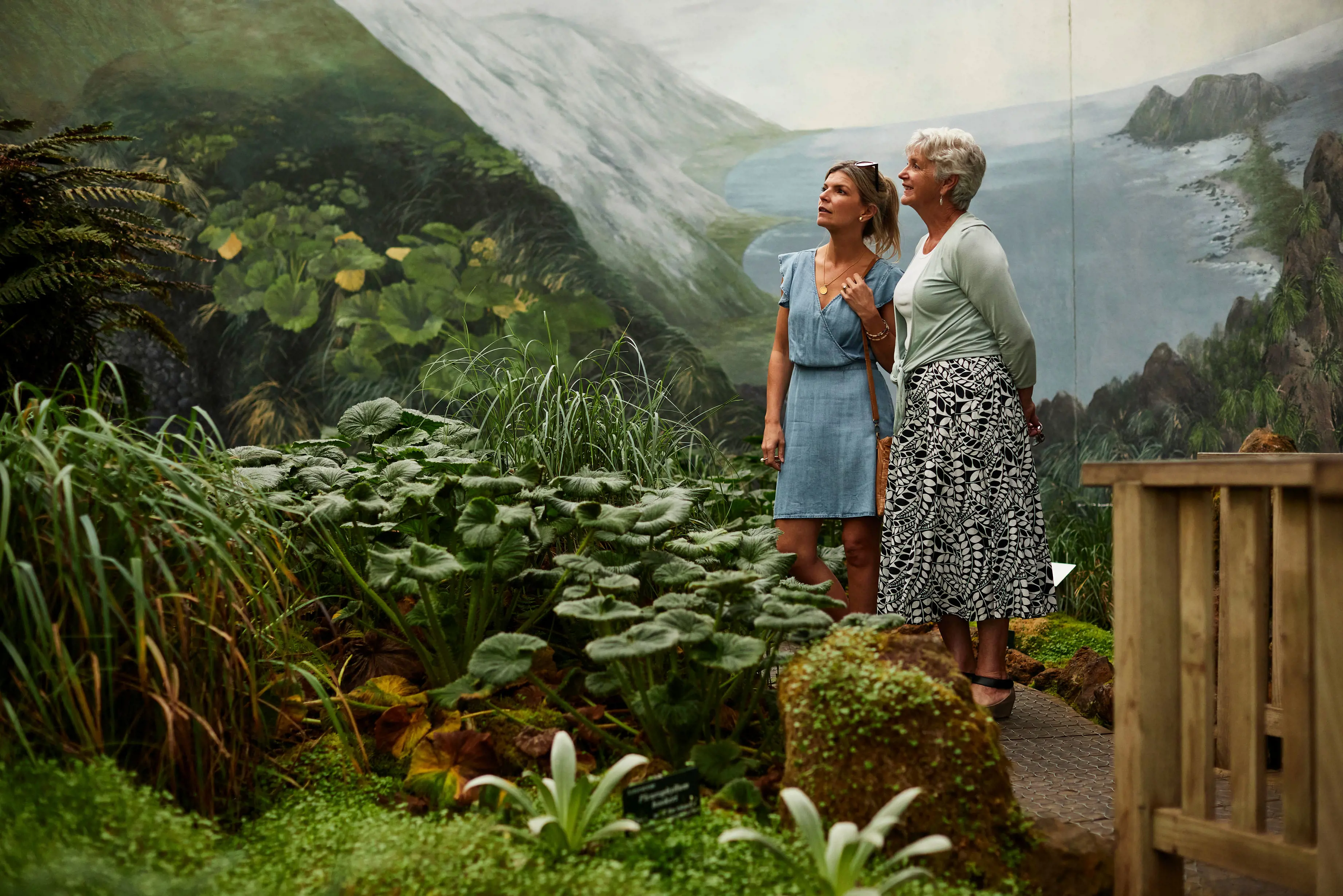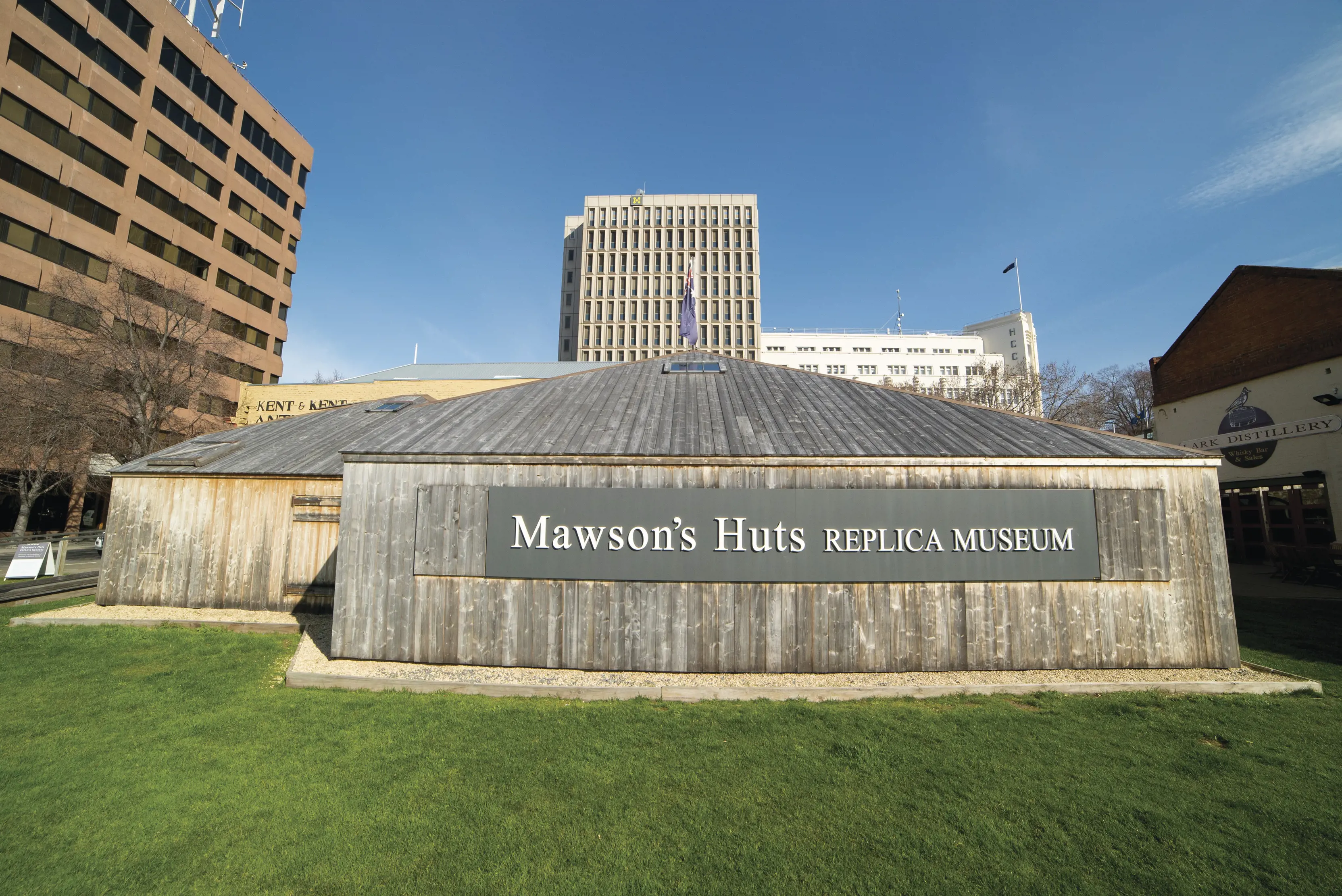
Sub Antarctic Plant House, Royal Tasmanian Botanical Gardens
Access your favourites here
You have a trip stored, would you like to save it?
Four months later, Norwegian explorer Roald Amundsen docked in Hobart, where he announced to the world his success in becoming the first person to reach the South Pole.
Even before these pioneering Antarctic moments, James Cook had sought refuge on Bruny Island, just south of Hobart, in 1773 after circumnavigating Antarctica.
Hobart’s connection to Antarctica has been long and celebrated, and it continues today. For travellers to Hobart, the city remains a tangible link to the polar region across the Southern Ocean.
Hobart’s southern suburb of Kingston is home to the headquarters of the Australian Antarctic Division, and research and supply vessels are a familiar sight on the Hobart waterfront.
Tasmania’s capital is the home port for the world’s most advanced Antarctic icebreaker, RSV Nuyina, a 160m ship that began service in late 2021. Another regular sight in the docks is the CSIRO’s Investigator, a state-of-the-art marine research vessel supporting Australia's atmospheric, oceanographic, biological and geosciences research from the tropical north to the Antarctic ice-edge.

After departing Hobart in 1911, the Australasian Antarctic Expedition spent two winters living and working in Commonwealth Bay in Antarctica, officially listed as the windiest place on Earth with winds often exceeding 320 km/h.
Travellers to Hobart can get some sense of what life was like for these intrepid explorers and scientists by visiting the Mawson’s Huts Replica Museum on the city’s waterfront, just 200m from where the expedition departed. (The original century-old huts in Antarctica still exist.) This world-class small museum provides an insight into the daily lives of the expeditioners, with the huts fitted out as they were in Antarctica – right down to the same book collection, and pride of place going to an original dog sled from the expedition.

Sub Antarctic Plant House, Royal Tasmanian Botanical Gardens

Look around Hobart and there are more reminders of the city’s time in the Antarctic spotlight.
A bronze bust of Amundsen sits outside the Institute for Marine and Antarctic Studies building in Salamanca, while a waterfront collection of bronze statues of penguins, seals, dogs and a flag-bearing man commemorates Tasmanian Louis Bernacchi, who was the first Australian to spend a winter in Antarctica in 1899. (If the name sounds familiar, Bernacchi’s father, Diego, is inextricably linked to Maria Island, where he tried to establish a cement works, vineyard and silk industry in the late 19th century.)
You can get your own sense of Antarctic-like conditions by visiting the Sub Antarctic Plant House in the Royal Tasmanian Botanical Gardens, which re-creates the climatic conditions of Macquarie Island, 1500km south of Hobart, where the plants inside the house were collected.
Or you can simply sit on Hobart’s shores, peering out through the mouth of the River Derwent to the Southern Ocean, and ponder the experience of crossing 5000km of some of the wildest waves and winds on the planet.